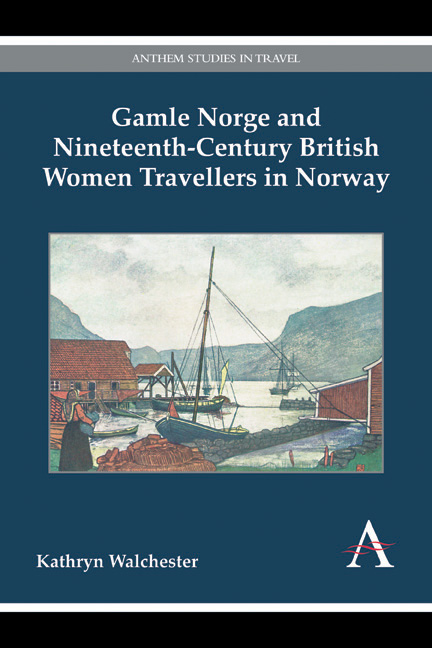Introduction: Gamle Norge
Published online by Cambridge University Press: 05 December 2015
Summary
‘I ask you to come to the Northern Land, to Gamle Norge (Old Norway)’, appeals Reverend Thomas B. Willson to the readers of the Girl's Own Paper in his 1887 article ‘Some Norwegian Characteristics’. In this piece and another titled ‘The Art of Travelling’ published the previous year, Willson emphasises the charm of Norway for young female travellers. He outlines what he sees are Norway's attractions for female tourists: the people and their folk culture, the scenery, the aurora borealis, the midnight sun and the country's honesty and authenticity. What is perhaps most interesting about Willson's article is that he makes very little of its Viking heritage, which in late nineteenth-century Britain was the dominant mode of understanding Norway. At the beginning of his book The Vikings and the Victorians: Inventing the Old North in Nineteenth-Century Britain, Andrew Wawn draws attention to the ubiquity of Viking references by the time of Willson's article in 1887. Wawn notes that ‘the word “Viking” was to be found on dozens of title-pages […]. After a slow start the floodgates opened during the last two decades [of the nineteenth century]’. Yet, in the Girl's Own Paper Willson mentions the Vikings only once in his article and this is to deny their relevance. He writes:
It is true that they have changed more or less since the days of their forefathers. There is not now, perhaps, the same spirit of unrest and desire for adventure which marked the Norsemen of the eighth and ninth centuries, whose fierceness sent up in the churches of Northern France the piteous prayer: A furore Normannorum libera nos, Domine. Those wild days have come to an end.
Willson seems at pains to establish the difference between the former inhabitants of the region and those who the female tourist would be likely to encounter in the 1880s. He instead emphasises an alternative version of Norway, that of ‘Gamle Norge’ or ‘Old Norway’. Whilst other imagined constructions of the region are evident in texts by men and women, that of ‘Old Norway’ pervades women's writing. This version of the nation as ‘Gamle Norge’ had, I suggest, particular resonance for women writers and was reworked in their travel writing and fiction about Norway throughout the nineteenth century.
- Type
- Chapter
- Information
- Publisher: Anthem PressPrint publication year: 2014



